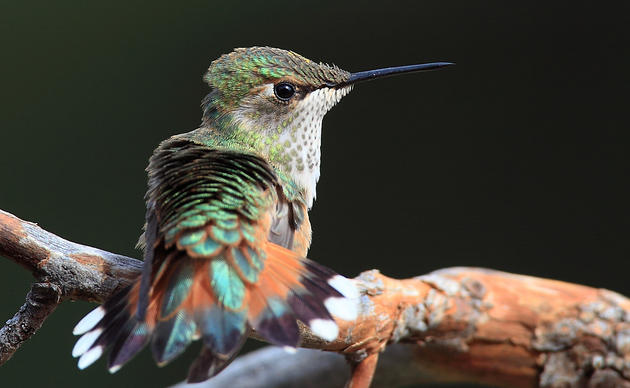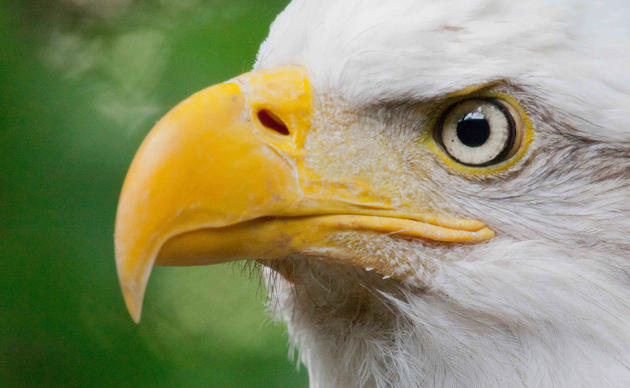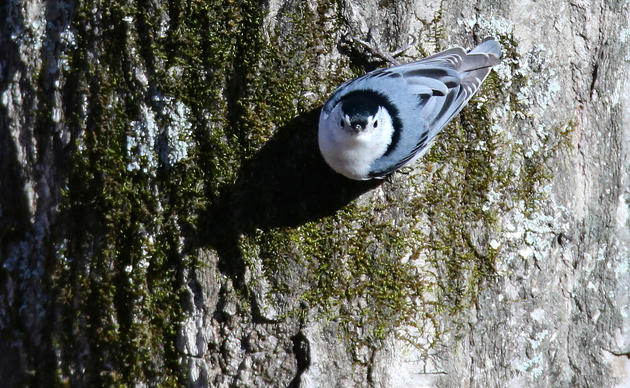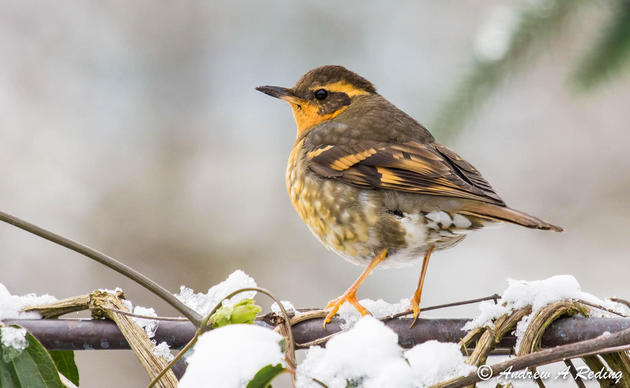Watchable Wildlife MOU
Agreement Joins Wildlife Watchers and Rural Economies
By attracting tourist dollars, Washington state’s wildlife may be feathering its own nest for the future under the terms of an historic agreement signed in Olympia this week by four public agencies and a statewide conservation group.
Despite Washington’s abundance of natural assets, the state ranks 46 among the 50 states in spending for tourism promotion. The new memorandum of understanding establishes a cooperative effort to create, enhance and market wildlife watching in Washington state.
“Washington’s legislators are the first in the country to request a plan for Watchable Wildlife,” said Sen. Ken Jacobson. “It’s a visionary approach to rural economic development that also helps achieve wildlife conservation.”
Participating agencies are the departments of Fish and Wildlife (WDFW); Community, Trade and Economic Development (CTED); and Transportation (WSDOT), as well as State Parks and Recreation Commission. Also signing the agreement was Audubon Washington, which together with its local chapters develops and publishes maps of the Great Washington State Birding Trail.
The agreement grew out of the 2003 Washington Legislature’s request for a strategic plan by WDFW, CTED, other state agencies and the private sector to promote Washington’s outstanding wildlife viewing opportunities while helping to maintain wildlife habitat.
“Not only is wildlife watching the fastest-growing form of outdoor recreation in America, it brings in substantial revenues to our state,” said Jeff Koenings, director of WDFW. “Washington has one of the highest percentages of state residents who watch birds and other wildlife.”
Statistics show that 47 percent of Washington’s residents watch wildlife annually, spending more than $979 million and creating 22,000 jobs, primarily in rural counties.
“The primary travelers who watch wildlife are what we call “urban naturalists,’” said CTED Director Juli Wilkerson. “By traveling to all corners of our state, these tourists bring new dollars to our rural economy.”
Audubon Washington’s Great Washington State Birding Trail comprises a series of self-guided driving loops that guide nature tourists to see our 365 species of birds along Scenic Byway routes throughout the state. The birding trail’s first three maps, the Cascade Loop, the Coulee Corridor Scenic Byway and the Southwest Loop were developed jointly by birders and local businesspeople who recognize the growing trend in nature travel.
Four more routes of the birding trail are planned, with two currently under development by Audubon Washington and local chapters in the Olympic Peninsula.
The wildlife promotion agreement was signed by Beatrice Booth, board chair, Audubon Washington; Parks Director Rex Derr; CTED Director Juli Wilkerson; WDFW Director Jeff Koeings; and Paula Hammond, WSDOT Chief of Staff.
How you can help, right now
Be the Voice for Birds
Decision makers need to hear from you. Sign up for Audubon Washington's Action Alerts and you will have an opportunity to weigh in on proposals that impact birds.
Get Involved
Birds need YOU! Get involved in helping to preserve our birds and their habitats today. There is something for everyone!
Take Action on Climate Change
Does your decision maker know that climate change is number one threat to birds? Ask for their help to protect the birds, the places, and the planet we love.




